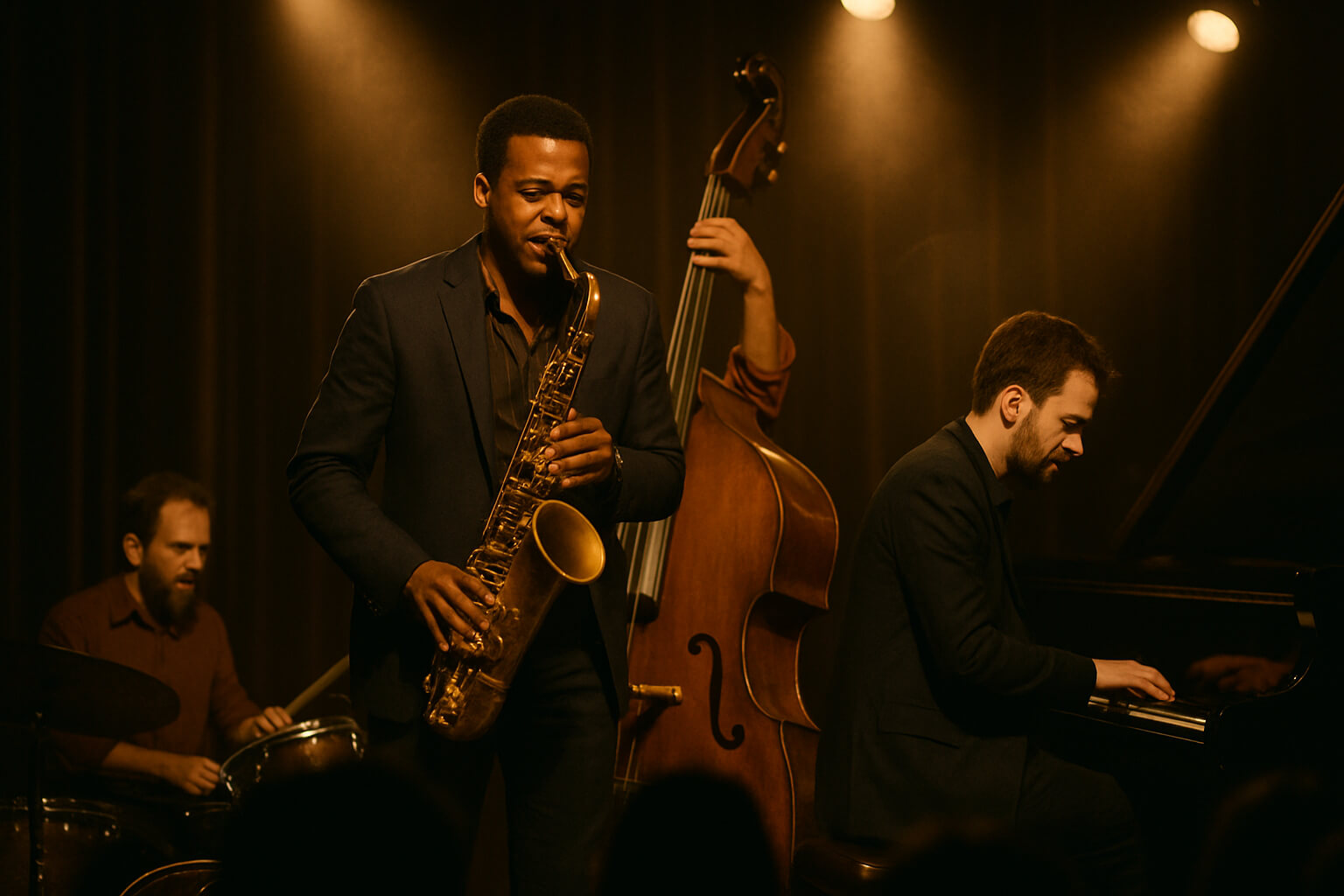Improvisation is more than a musical technique—it’s the emotional lifeblood of jazz and blues. Where other genres may follow rigid structures, jazz and blues thrive on spontaneity, individuality, and raw expression. From expressive saxophone runs to soulful guitar bends, improvisation transforms each performance into a unique, unrepeatable moment.
Whether you're a curious listener, a beginner learning to jam, or an experienced player exploring deeper artistry, understanding the central role of improvisation in these genres is essential to appreciating—and creating—authentic music.
What Is Improvisation in Music?
At its core, improvisation is the act of composing music in real time. There are no written notes guiding your performance. Instead, you rely on your ear, your feel for harmony, and your musical instincts to decide what to play next.
In jazz and blues, musicians usually improvise over established chord progressions. These progressions serve as the backdrop for creativity—a structure within which freedom can flourish.
For example, a blues guitarist may solo over a familiar 12-bar blues pattern using the minor pentatonic scale. But how they bend notes, phrase licks, and build tension is what gives each solo its personality.
Improvisation is not chaos—it’s musical storytelling in the moment.
Why Improvisation Matters in Jazz and Blues
1. Expressive Freedom
- Improvisation lets musicians react in real time—to the mood, the audience, and each other. A saxophonist may respond to the subtle shift in a drummer’s rhythm. A singer might stretch a phrase to emphasize emotion. These spontaneous choices inject a performance with genuine feeling.
- Each note becomes a word in a personal story. No two solos are ever exactly the same, and that’s the beauty of it.
2. Identity and Style
- In jazz and blues, your voice isn't just your sound—it's your improvisational fingerprint.
- Icons like Miles Davis, Thelonious Monk, or B.B. King are remembered not just for what they played, but how they played it. Their phrasing, note selection, space, and tone were all expressions of their inner musical identity.
- Through improvisation, musicians develop a unique voice, allowing them to connect deeply with both the music and the listener.
3. Interactive Performance
- Jazz and blues are deeply communal. Band members aren’t just playing together—they’re conversing.
- This interaction often happens through call-and-response patterns, musical “questions” and “answers,” or dynamic shifts that create tension and resolution.
- In a live setting, the energy can become electric:
- A trumpet player plays a daring phrase.
- The pianist replies with a syncopated chord stab.
- The drummer adjusts their groove in response.
- Each moment is an invitation for someone else to listen, react, and create—together.
4. Storytelling Through Sound
- Improvisation in blues and jazz is emotional storytelling. Without lyrics, musicians convey feelings—joy, pain, anger, peace—purely through sound.
- A blues guitarist dragging a note through the fretboard, or a jazz vocalist riffing over a vamp, is telling a tale shaped by lived experience. This raw expression connects deeply with audiences, making the music feel personal and human.
How Musicians Learn to Improvise
Despite its spontaneous nature, improvisation is not random—it’s a practiced art form grounded in theory, technique, and listening.
1. Learn Scales and Chord Tones
- Improvisation starts with understanding the musical vocabulary:
- Blues scale – the emotional backbone of blues solos.
- Minor pentatonic – essential for both jazz and blues improvisation.
- Major scale & modes – gives you a broader palette of sounds.
- Begin by practicing these scales in different keys. Focus on the chord tones (root, 3rd, 5th, 7th) that define the harmony—these are your anchor points during solos.
- Ready to put scales into action? Try Our AI Music Generator for Free – Create Your First Track Now
2. Listen and Imitate the Greats
- Improvisation is like learning a language—you start by listening and mimicking the masters.
- Transcribe iconic solos by artists like Charlie Parker, John Coltrane, Robert Johnson, or Etta James.
- Don’t just copy—understand why they chose each note.
- Try playing the solo, then tweaking it to make it your own.
- Practice with high-quality backing tracks: Download Our Curated Pack of 100 Royalty-Free Tracks
3. Use Call and Response
- This ancient musical technique is foundational in both African and Western music traditions. It teaches you how to:
- Listen.
- Respond.
- Build musical conversation.
- Record yourself playing a simple phrase ("call"), then respond with a variation. Over time, your improvisation will become more intuitive and natural.
3. Play with Loops or Live Bands
There’s no better way to grow than jamming with others.
- Use a looper pedal to create your own backing progressions.
- Practice improvising over repeated chords.
- Join a band, open mic, or jam session to build real-time reaction skills.
Improvisation blossoms when it’s shared—it’s a social art form.
Tips for Beginners
If you’re just starting to improvise, here are key principles to build confidence and avoid overwhelm:
- Stick to the basics: Use just 3–5 notes from a scale at first.
- Play slowly: Give your brain time to think ahead.
- Leave space: Silence can be just as musical as sound.
- Focus on tone: A single, well-played note often has more impact than a flurry of fast ones.
- Record yourself: Listening back helps you hear what works and what doesn’t.
Want to follow a structured path?
Final Thoughts
Improvisation is not just a skill—it’s the spirit of jazz and blues. It turns theory into emotion, structure into freedom, and notes into a living language.
By training your ears, studying your heroes, and playing from the heart, you’ll gradually discover your own musical voice—and with it, the ability to speak and connect through sound.
Whether you’re crafting a late-night blues solo or trading licks at a jazz club jam, improvisation will always be your bridge to creativity, emotion, and authenticity.
Ready to create your own sound? Subscribe to Unlock Weekly Free Music Drops – Used by 10,000+ Creators
